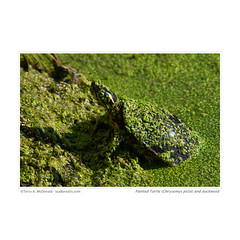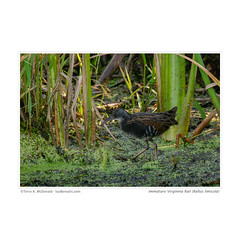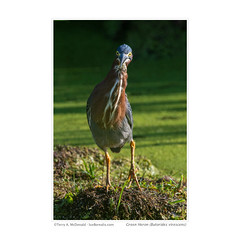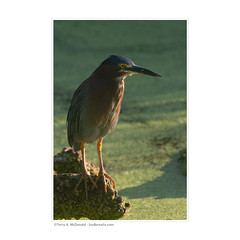Iceland, June 2023

Iceland: the land of fire and ice. To photographers, this rock in the North Atlantic is a gem. Simply put, there are more dynamic and engaging natural landscapes and photo ops per square kilometre in Iceland than anywhere else I’ve travelled. And most importantly, they are accessible by car and/or a short walk or hike.
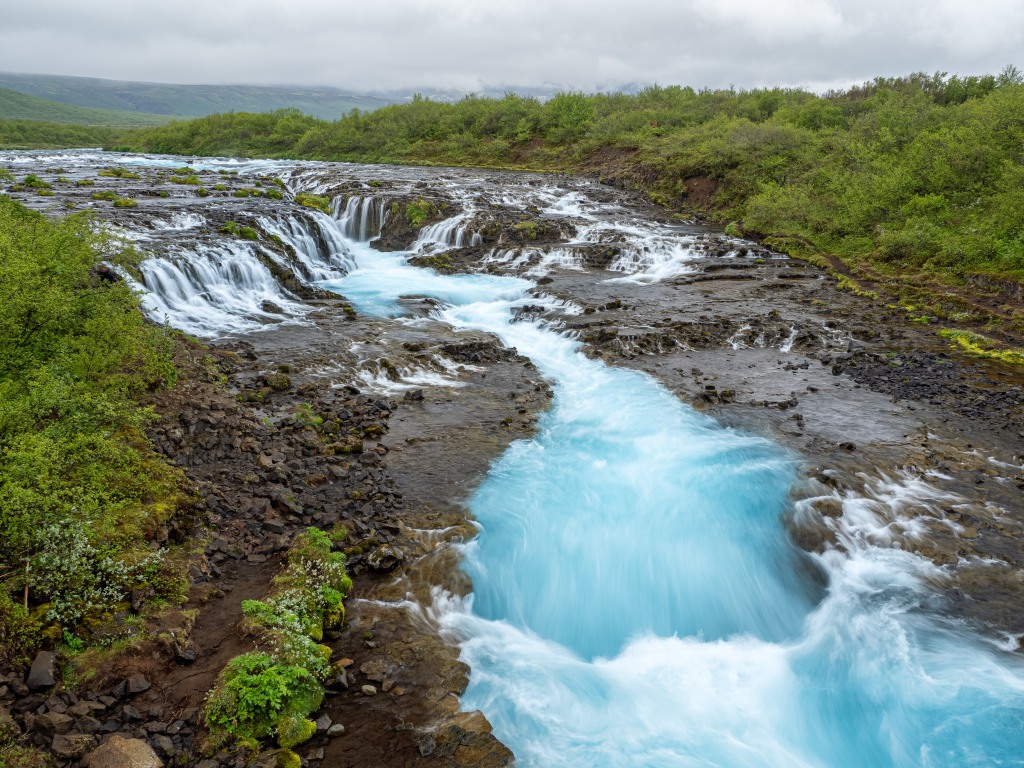
OM-1 w/ M.Zuiko Digital ED 12-100mm F4.0 IS PRO at 14mm (28mm efov); f/4.5 @ ¼; ISO 200; Circular Polarizing filter; EV–⅓; Live ND mode used to blur motion in the water
Iceland’s raw beauty is the result of plate tectonics and volcanoes producing masses of lava—a new fissure is erupting as I write this—the constant grinding by massive glaciers flowing down mountain valleys, and the relentless flow of numerous rivers, sculpting cliff faces and scouring broad flood plains. For photographers, these forces create evocative and evolving landscapes of contrasting colours, shapes and patterns.

OM-1 w/12-100mm/4 at 16mm (32mm efov); f/8 @ 1 second; ISO 200; EV–⅓; Live ND mode
“Gull” = golden; “foss” = waterfall; “á” = river. Therefore, this is the Golden Waterfall on the River Hvít
Ancient azure blue glacial ice leaps from the rich, blacks sands of eroded lava. Bright snow or blue sky contrasts with the soft reds, oranges and ochres of lava charged with iron and sulphur compounds. Emerald green grasses and mosses cling to beds of brown-black lava soils, punctuated with blazes of pink and yellow summer wildflowers. Brilliant white water cascades carve chasms into cliffs and gorges, spilling out over the landscape in the ever-changing ribbons of braided streams and rivers. Now, add to those scenes some stocky Icelandic horses, a pure and ancient hardy breed with their long, wind-blown manes, and some woolly white and black Icelandic sheep—ideal for anyone with a camera; an endless paradise for the die-hard landscape photographer.
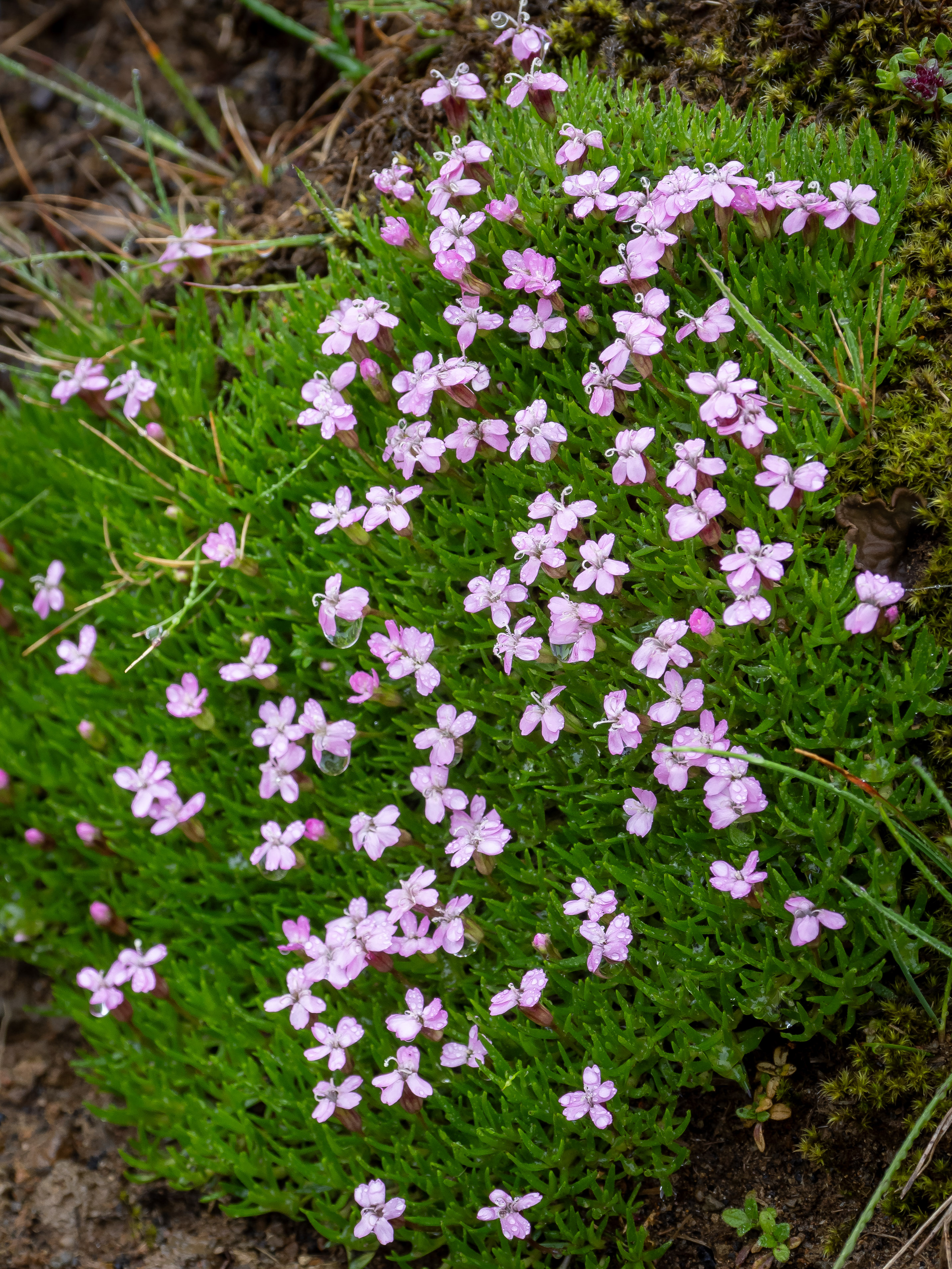

Details along the trail, Reykjadalur
In June 2023, I was the trip lead for a group of 30 energetic teens, 3 chaperones, and our Evolve Tours guide for 7 very full days of touring and hiking the most commonly visited places in Iceland. The overnight flight from Toronto landed at Keflavík at 6:30am local time, which is 2:30am Toronto time. But, as you do when travelling, you hit the ground running.
Photo Tip: While on the flight to Iceland, keep an eye out for the dramatic mountains and glaciers of Greenland on the north (left) side of the plane. In the summer months, with the Midnight Sun of the Arctic, the light will be warm, even dawn-like. You may find it worth selecting a window seat on that side, typically seat “A” or, for the homeward flight, seat “F”, preferably ahead of the wing. As with everything photographic, there is no guarantee the weather will co-operate.
I did this same trip six years previously with a school group, as well as travelling for two spectacular weeks in March a few years ago with my wife, Laura. She’s travelled to Iceland an additional 2 or 3 times herself. Can you tell we love Iceland?

OM-1 w/12-100mm/4 at 16mm (32mm efov); f/5.6 @ 1/60; ISO 200; EV 0
Still bleary-eyed from the the flight, we wolfed down some breakfast at the bus, then we were off to see the sights of the Golden Circle Route: the tectonic fissures and historical setting of Þingviller National Park; the hot steam jets of Geysir, and the largest waterfall in Europe, by volume, Gullfoss. This, along with the “Waterfall Route”, which we did on Day 3, (Skógafoss and Seljandsfoss) are the most frequently-visited places in Iceland as they are all within day-trip distance of Reykjavik.

OM-1 w/12-100mm/4 at 16mm (32mm efov); f/9 @ ⅛; ISO 200; EV–1⅓; Live ND mode
Reducing the amount of sky in the composition, then adding a sky mask during editing allowed me to bring some definition back to the clouds
Our first base, though, was a guesthouse south of Selfoss, about an hour southeast of Reykjavík along Highway 1, the Ring Road or Hringvegur. This gave us the freedom to backtrack slightly to visit the Hellisheidi geothermal power plant and hike out to the Reykjadalur hot springs on Day 2
Photo Tip: Phones, watches and tablets automatically update to different time zones; most cameras do not. Before landing, take a moment to set your camera to the time and date of your destination. Iceland is GMT 0 and, with nearly 24 hours of daylight in the summer, it does not observe Daylight Savings Time or Summer Time.
One of the difficulties with Iceland is the weather. Be prepared for the worst—overcast, rain and wind—and hope for better. Icelanders will tell you, “If you don’t like the weather, wait five minutes”, an allusion to how variable it is. The problem is there can be days of overcast skies with light to heavy rain, sometimes calm and sometimes windy. This is what we experienced for most of our trip, counting the sunshine in minutes. In fact, we cancelled our day on Heimaey, in the Vestmannaeyjar Islands due to constant rain and near gale force winds. The ferry trip, alone, would have done us in.

OM-1 w/12-100mm/4 at 16mm (32mm efov); f/9 @ ⅛; ISO 200; EV–1⅓; Live ND mode
Yes, another dreary day. This took some careful editing in Lightroom to separate sky and falling water.
As a photographer, what to do? As I said, prepare for the worst and hope for something better. “Preparation” takes two forms: mentally and physically. If you go to Iceland expecting the weather to co-operate, to provide you with dramatic blue skies mixed with soft, golden sunshine, you will likely be frustrated. Those days do happen, more so in summer than at any other time of year, but be mentally prepared to adjust your expectations.
Consider changing your schedule to better fit the weather or change the nature of your shooting. Reduce the amount of sky in your landscapes, concentrating more on colour contrasts, shapes and natural details. Consider also the details: those “blazes of pink and yellow wildflowers” pop with rain drops against the bright green grasses and mosses and dark lava soils.
Photo Tip: With overcast skies, isolate portions of waterfalls against the dark volcanic rock. Expose carefully then check for highlight clipping on your LCD; adjust as needed and shoot again. When you include an overcast sky, again, carefully check for highlight clipping and reduce exposure accordingly. Alternatively, use HDR techniques to capture the full tonal range. Either way, with some post-capture masking and editing, overcast skies can be tamed to enhance the contrast.
The other aspect of preparing for rain is the physical aspect of protecting equipment. My colleague on the trip used light plastic rain protectors which worked okay, but they also flapped around in the wind. A heavier, tighter fitting rain cover may have solved the issue. I chose to go au natural, and am pleased to report that the weather sealing of my OM System gear is excellent, though I also took precautions.
Another key piece of equipment you’ll need, rain or shine, is a soft, lint-free, absorbent cloth to wipe down your gear, especially the front filter or lens element. Wind and waterfalls, and sometimes just waterfalls, will ensure you and your gear will get a thorough soaking. At Gullfoss and Skógafoss the spray is relentless, and at Seljandsfoss, it’s completely unavoidable as you walk and climb behind the waterfall. If you make it to Gljúfrabúi, the hidden waterfall near Seljandsfoss, you and your gear will be thoroughly soaked.
My third rain prep suggestion is about your camera strap. Expecting I would be in a fleece and raincoat most of the time (which proved correct!), I switched my usual neck strap for a “quick draw” shoulder harness. This meant the camera could easily be tucked under my right arm, zipped inside my raincoat when necessary, but always be ready-to-go in an instant. That shoulder harness is the best $25 I’ve ever spent on photography. Even better is how easily I can unscrew the strap from the tripod socket to free-hold the camera, my other favourite way of shooting.

OM-1 w/12-100mm/4 at 18mm (36mm efov); f/8 @ ½; ISO 200; EV+1; Live ND mode
I’m often asked about what lenses to bring when travelling. Previously, I used a Sony RX-10iii that covered 24mm to 600mm with a beautiful Zeiss lens and a 1″ sensor. It was a great travel camera that I can highly recommend. More recently, I’ve moved into the OM System, specifically chosen for its high quality and portability.
The OM-1 and my kit of three high-quality zooms covering the full frame equivalent of 16mm to 800mm all fit into a small sling pack weighing about 4kg (less than 10 pounds). So I bring everything. However, during this most recent trip, I used my 12-100mm/4 (24-200mm efov) almost exclusively, only exchanging it for my 100-400 (200-800mm efov) to capture close-ups of a seal in Jökulsárlón glacial lagoon. If there had been puffins or other seabirds, the 100-400 would have seen more use. If the weather and timing were on my side, and I wasn’t herding 30 teens, I would have made better use of my 8-25mm/4 (16-50mm efov) zoom to create more dramatic landscape shots.

OM-1 w/12-100mm/4 at 12mm (24mm efov); f/5.6 @ 1/500; ISO 800; EV–⅔
It was so windy on the top of this “hill” I had no choice but to increase the ISO to get a fast enough shutter speed!
In our seven days, we covered a lot of ground and did a lot of hiking. A few commercial “extras” we included in the trip were:
- A tour of a lava tunnel at Raufarhólshellir. It was educational but not ideal for photographers due to the short time in the tunnel;
- Taking an amphibious craft out onto Jokülsárlón glacial lagoon where we got close up to brilliant blue icebergs and a seal;
- A glacier hike on Sólheimajökull glacier; great for black and whites with a touch of blue. I preferred our glacier hike on Svínafellsjökull years ago with its more dramatic location, though I understand it has retreated significantly;
- A popular hiking destination, but one that requires 4×4 vehicles (we had a 4×4 coach!) is Þórsmörk. The image above gives a sense of the outstanding and dramatic beauty of this extensive wilderness area. The road in is loose gravel, “organized” each year into a semblance of a road after the spring runoff. I lost count of the number of river crossings the coach had to make as there are no bridges in this region. Surprisingly, there is public bus service into the Þórsmörk region, but you need to be prepared for wilderness.
- On our last school trip, we visited Landmannalaugar, an equally spectacular wilderness region that also requires a 4×4 vehicle for access.
- The Blue Lagoon; very expensive, but it’s what they wanted!

OM-1 w/12-100mm/4 at 15mm (30mm efov); f/5.6 @ 1/125; ISO 200; EV 0
Only the blue of the Atlantic Ocean and a hint of green on the distant slopes provide colour to an otherwise surreal and desolate landscape.
There are a few favourite places that I am looking forward to getting back to for more serious photography:
Brúarfoss is the spectacular glacial-blue-water waterfall just east of Laugarvatn, on the Golden Circle. With a new road and parking area, this place will soon become inundated with Instagrammers.
Breiðamerkursandur, also called Fellsfjara, is the black sand “Diamond Beach” across the Ring Road from Jokülsárlón glacial lagoon. It is here that icebergs large and small wash ashore, having calved off from Breiðamerkurjökull glacier and floated through Jokülsárlòn. As a photographer, you can well-imagine the photographic potential of combining clear, white, and blue ice with black sand and gravel. Add the waves piling in from the North Atlantic, and you have a few hours of photo riches to discover and create.
The same is true at Reynisfjara black sand beach near Vík, but here you need to be extra cautious of rogue waves which are known to sweep tourists away. Seriously!! The basalt columns along the shore and the various eroded cave features create another treasure trove of interesting photos.
These are just a few of the many dozens-hundreds of photo ops available to anyone with a creative eye who can work with the weather and the colours, shapes and patterns of the various landscape elements to create truly engaging photographs. Iceland really is a land made for landscape and nature photographers.
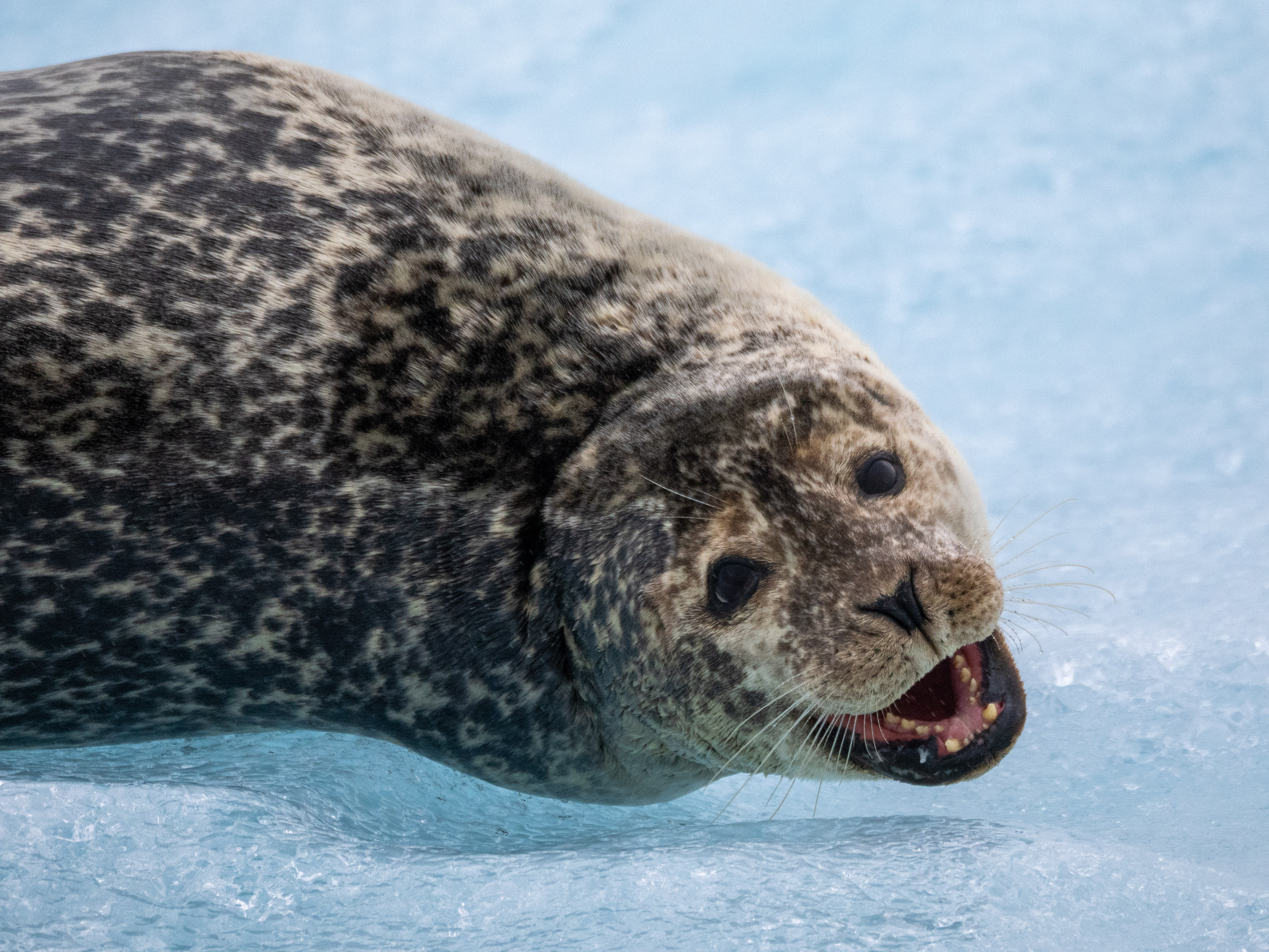
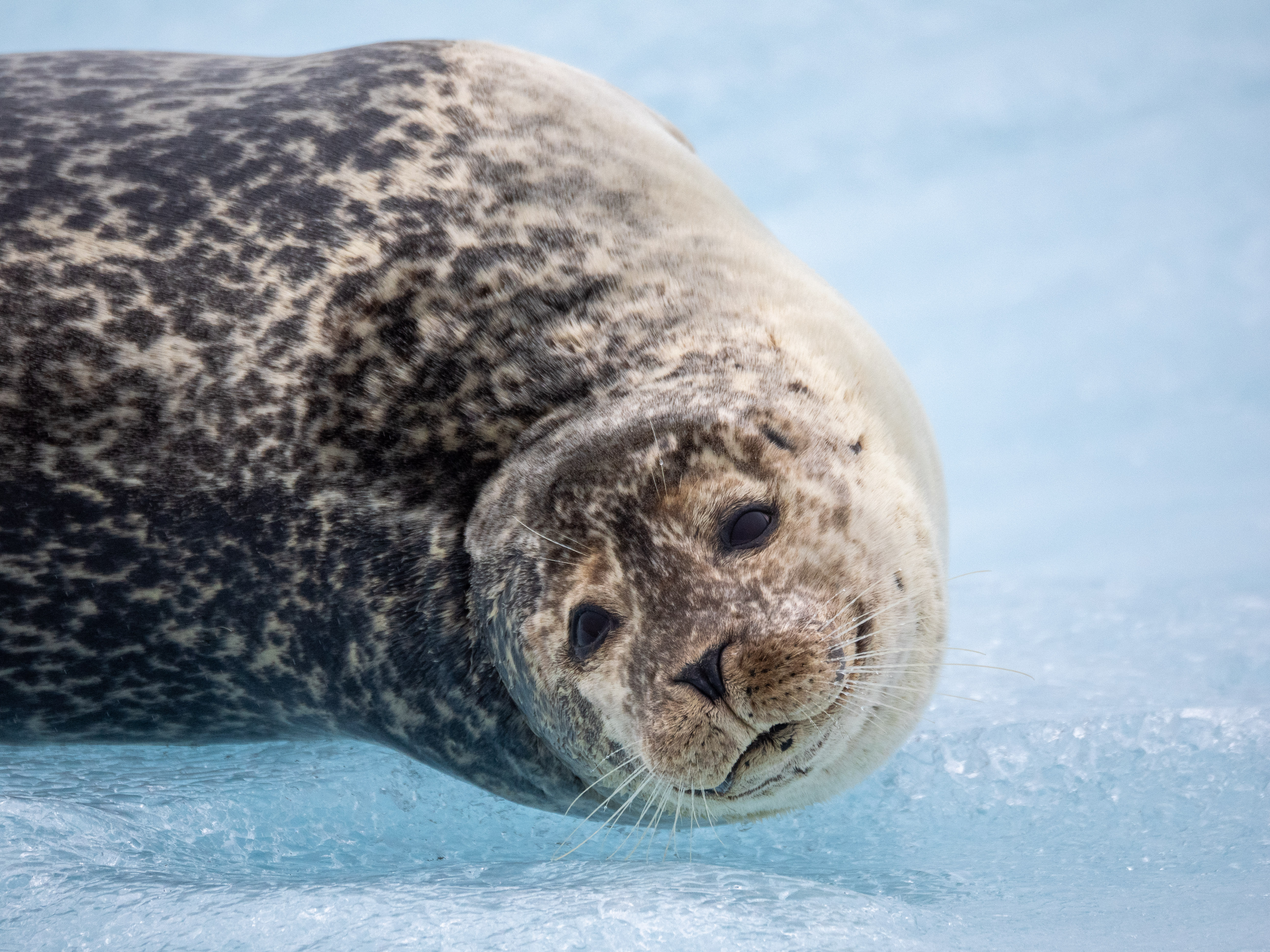
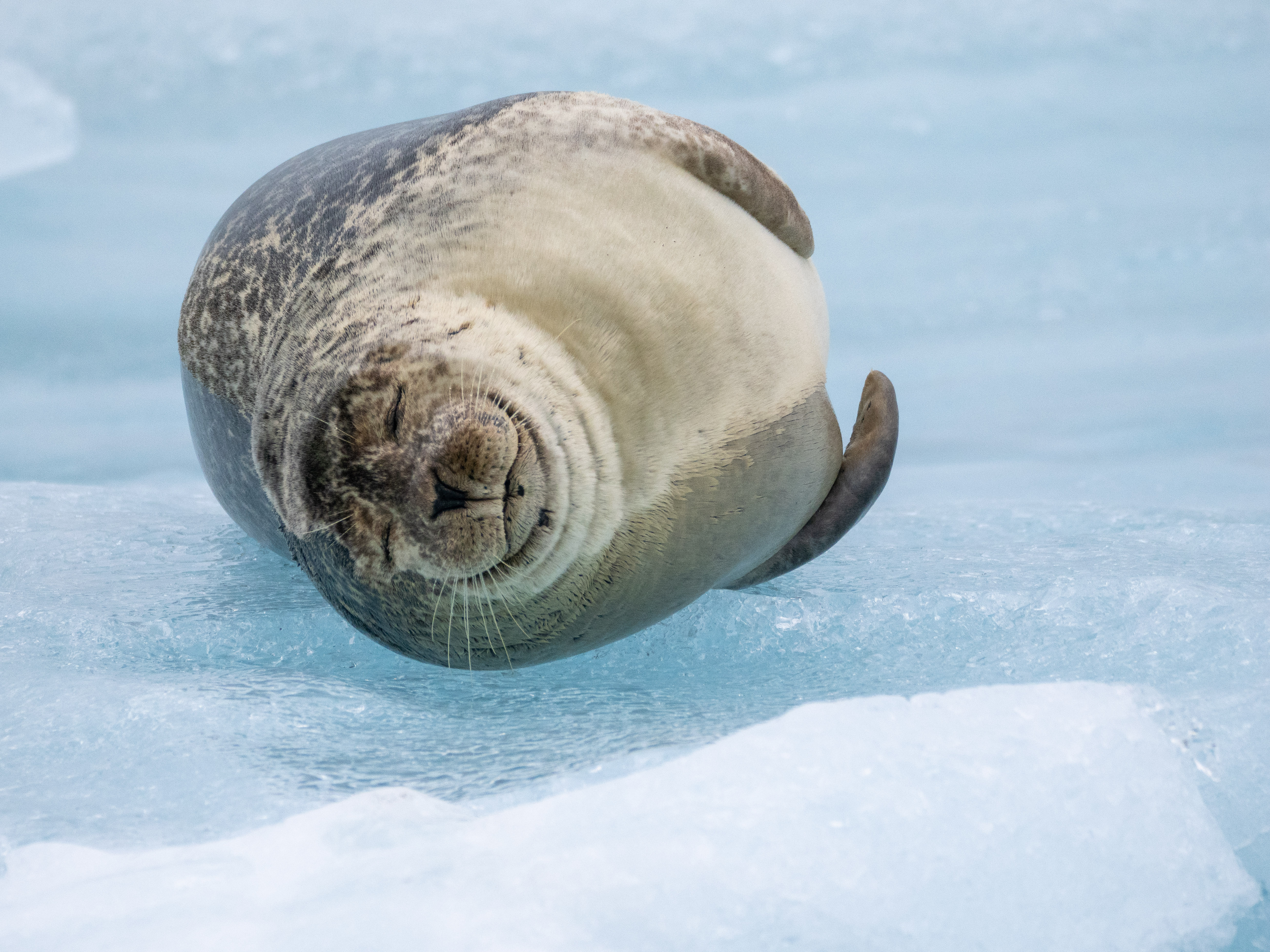
On ice: Harbour Seal, Joküllsárlón
OM-1 w/M.Zuiko Digital ED 100-400mm F5.0-6.3 IS at 400mm (800mm efov); f/6.3 @ 1/1250; ISO 1000; EV 0. The internal stabilization of the lens and camera combined to make these shots possible with an 800mm field of view on a rolling boat.
A few tips if you are thinking of visiting . . .
Since I was with a school group, we did a coach tour. Our personal trips have all been self-drive. If you’re thinking about Iceland, I strongly advise booking a rental car and BnBs or guesthouses and spending a week or more. There is more than enough spectacular scenery and experiences to see and photograph without a four-wheel-drive. Even in March we rented a small car and had little trouble touring the north of the island. The roads were no worse than our Canadian roads in winter.
A car gives you the flexibility to stay longer at places when the shooting is good or move on (or hide out in) during bad weather. You can start as early in the day as you like and keep shooting ‘til midnight. Oh, and if you’re there in the summer, don’t go looking for the Aurora borealis! Icelanders turn them off until the fall, when the sky is dark enough at night to see them. It’s a way of promoting tourism in the off-season.
Meals out can be expensive, but once you realize taxes are already in the price and tipping is not a thing in Iceland (everyone earns a decent wage there), the prices aren’t too far off any touristy place. Save yourself some coin by shopping at Bonús, and make at least some of your meals at your BnB. Some Icelandic foods you really must try include Kjötsúpa, a lamb and vegetable soup similar to Scotch broth; Plokkfiskur, a traditional fish and potato stew; and their amazing liquorice ice cream—in fact all their ice cream is phenomenal! There’s a gas station near Svínafellsjökull Glacier in Vatnajökull National Park that has a great cafeteria with Icelandic food called Veitingasala Restaurant, Shop and Gas—highly recommended.

OM-1 w/12-100mm/4 at 57mm (114mm efov); f/4 @ 1/80; ISO 200; EV–⅓
The black is ash from the eruption of Eyjafjallajökull in 2010.
When we travel to Iceland ourselves (without students), we find the BnB/guesthouse experience far more enriching and flexible. We book in central locations (Selfoss, Laugarvatn, Kirkjubæjarklaustur, Vík, Ólafsvík, etc.). We stay a few nights at each location, and explore from there. A great way to finish the day is by going to a local geothermally-heated pool with hot tubs. They are typically outdoors—a wonderful experience when it’s snowing in March! The commercial hot springs—Sky Lagoon, Hidden Lagoon and Blue Lagoon—are lovely but very expensive. However, a 1-hour-hike up Reykjadalur (near Hveragerði) will take you to a natural hot spring, for free, as are the numerous other natural hot springs around the country.
In fact, be wary when you visit Iceland travel websites. You will be bombarded with commercial experiences that cost $100 to $800 or more. In reality, all of the outdoor landscape and walking/hiking experiences are free, other than the cost to park your vehicle (about $10/day at a National Park) and some toilet facilities (by card or coin, $1 to $3 per use).
The culture in Iceland is rich and ancient. The landscapes breathtaking. And the people are warm, forthright and confident, thoughtful and creative. Mass tourism in Iceland is still a relatively new phenomenon, so don’t get upset if you are told off for stopping at the side of the road for a photo or worse, pulling into someone’s farm lane. They don’t appreciate roadside pees either. And watch your speed! 90km/h is 90km/h, not 100 or 110 like it is here in Canada. The roads are narrow enough without having a wide-eyed tourist driving with only half an eye on the road while scouting for just the right spot for a photo. Most importantly, once you return home, begin planning a second trip because once is never enough!
Further Reading and Planning (and Dreaming!)
Caveat: Like every travel website, the photos shown on these and many other websites show each location at its best. Many photos have also been shot with drones, which are not permitted in popular travel areas and national parks without a special permit. Weather is also highly variable in Iceland and can be used to your advantage in photography , but it can also be disappointingly rainy at the wrong time.
- Iceland Travel: Scenic Routes in Iceland – This is the official travel website of the Iceland government. I like it because the maps and info are very helpful and there are no ads screaming for attention as with so many commercial sites. We visited the Golden Circle route and the South Coast route. I can also highly recommend Snæfellsnes and the North, though really, you can go anywhere and be astonished at the beauty.
- Lonely Planet: Iceland – My second go-to site for Iceland newbies
- Iceland Weather: Your phone may have weather showing right on the Home Screen, and while it may be accurate most of the time and in your home country, it may not be accurate locally in Iceland. The Iceland weather service has a much more reliable website and phone app, which also includes earthquake and avalanche updates.
- SafeTravel.is is a website and phone app designed to provide you with local updates to help keep you safe. It is particularly helpful if you are self-driving.
- Vatnajökull National Park covers an extensive part of the south coast with many viewpoints and glaciers accessible by “easy” half- and full-day hikes. Skaftafellsstofa Visitors Centre is a great place to start with the well-interpreted Glacier Trail and the Svartifoss Trail. Further east is Fellsfjara black sand “Diamond” beach with icebergs washed up from Jökulsárlón glacial lagoon, where tours of the lagoon are available (for a fee) on an amphibious craft, a zodiac, or by kayak.
- Drone Use in Iceland – Although a commercial website, it has the most complete set of rules and regulations. Note that additional rules will be implemented “soon” to comply with EU rules regarding registration of drones and pilot training. You will need to register at flydrone.is and pay the ISK 5,500 (CAD 60) fee.
Notes:
- efov: Equivalent Field of View for a full-frame digital camera or 35mm film camera.
The advantage of the smaller Micro Four-Thirds sensors is that an Olympus 400mm lens captures the same field of view as an 800mm lens on a full-frame camera. This means size and weight are greatly reduced and the handling of long lenses and image stabilisation are far superior. - All images are saved as RAW files then are processed using Lightroom Mobile and Lightroom Classic. Jpegs out of the camera just don’t cut it with me. I have never met an image that doesn’t benefit from some thoughtful post-capture processing; it’s the equivalent of breathing life back into a machine image.
Thanks for reading!
If you have any questions or comments about Iceland, M43s photography, OM System, efov, raw capture, editing or anything else, please add it to the Comments section.
If you are not yet a subscriber, then consider adding your email so you are instantly alerted to new blog posts. And I promise not to inundate your inbox.
Have a look at my work by visiting www.luxBorealis.com and consider booking a presentation or workshop for your Photo Club or a personal field and/or screen workshop at Workshops.

